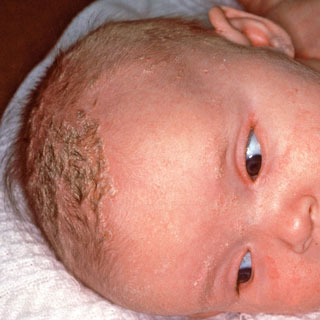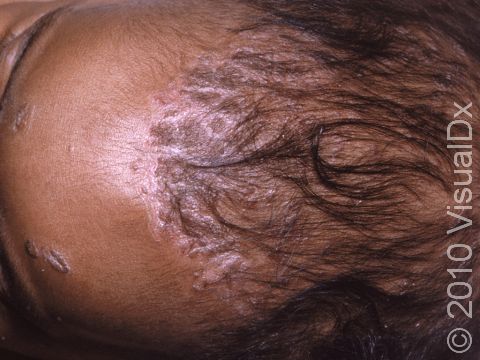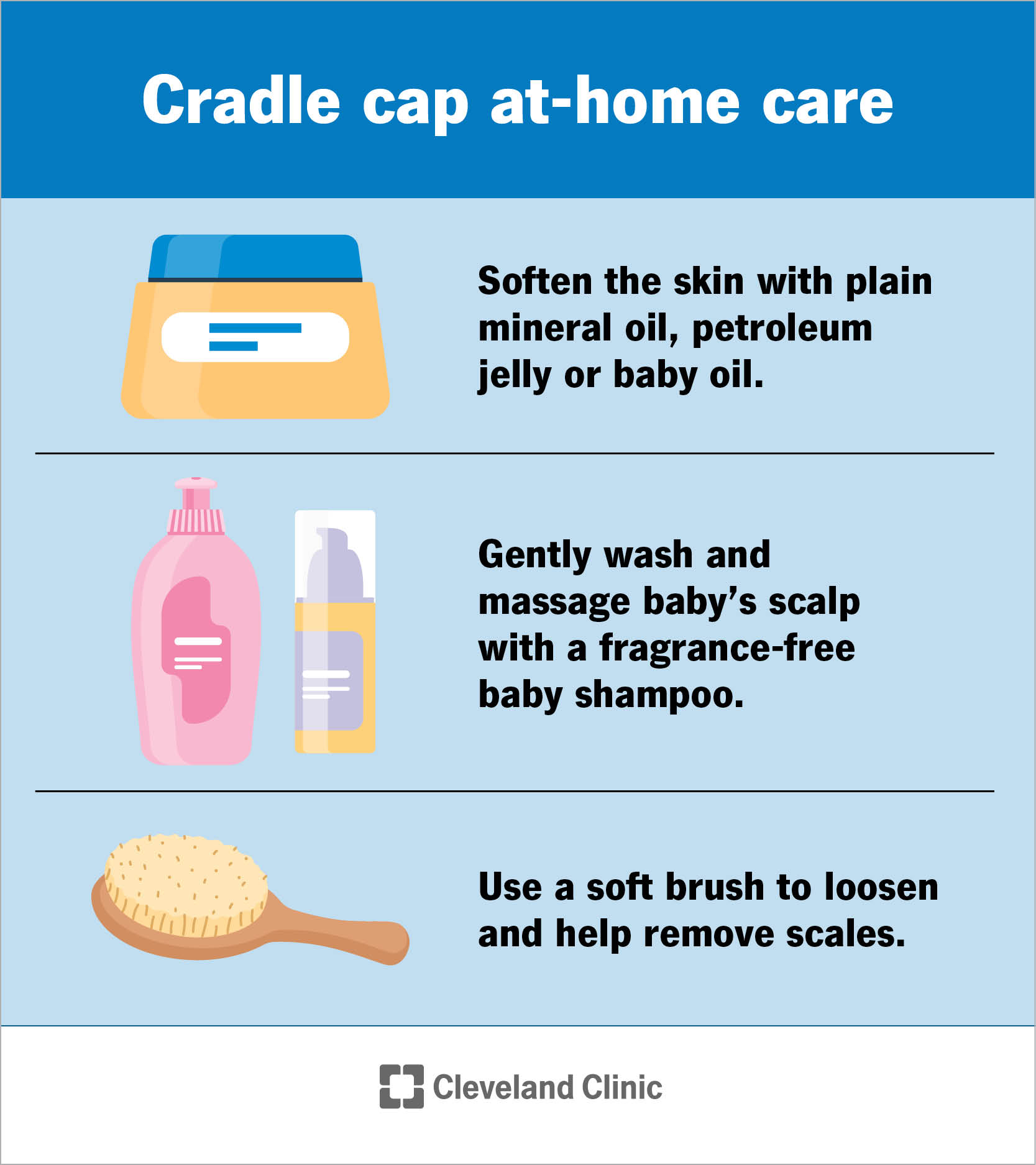Cradle cap can be managed at home with Self Care Strategies and moisturizing. Use a mild shampoo and soft brush.
Cradle cap, also known as seborrheic dermatitis, is a common condition in infants. It appears as yellowish, greasy, scaly patches on the scalp. While it can look concerning, it is generally harmless and not itchy. Gently washing your baby’s scalp with a mild baby shampoo can help.
Softly brushing the scalp with a soft brush can also aid in removing scales. Avoid picking at the scales, as this can lead to infection. Applying a small amount of baby oil or petroleum jelly can soften the scales, making them easier to remove. If the condition persists or worsens, consult a pediatrician for further advice.
Introduction To Cradle Cap
Cradle cap is a common condition in newborns and infants. It looks like scaly patches on the baby’s scalp. Though it looks alarming, it is usually harmless.
What Is Cradle Cap?
Cradle cap, medically known as seborrheic dermatitis, is a skin condition. It appears as yellow or white scales on the baby’s scalp. Sometimes, it can also affect the face, ears, and neck.
This condition is not contagious or caused by poor hygiene. Most cases resolve on their own within a few months. Good self-care can help manage the symptoms.
Common Misconceptions
- Cradle cap is not a sign of infection. It does not indicate any illness or discomfort in your baby.
- It is not caused by poor hygiene. Regular bathing and gentle care are sufficient.
- Cradle cap is not itchy or painful. Babies do not usually feel discomfort from it.
- It does not require medical treatment. Most cases resolve on their own without any intervention.
Parents often worry about cradle cap. Understanding the condition can ease these concerns. Proper self-care can help manage and reduce the symptoms effectively.
Identifying Cradle Cap
Cradle cap is a common skin condition in babies. Recognizing it early helps manage it effectively. This section will guide you through the symptoms and signs, and when to see a doctor.
Symptoms And Signs
Recognizing cradle cap involves noting specific symptoms. Here are the main signs:
- Yellow or white scales on the scalp
- Thick crusty patches
- Oily or dry skin
- Redness around the scales
These symptoms usually appear in the first few months of life. The scales might also spread to the face and neck.
In most cases, the baby does not seem bothered by it. The condition is not itchy or painful.
When To See A Doctor
Cradle cap usually resolves on its own. But in some cases, you should consult a doctor:
- If the skin becomes red and inflamed
- If there is bleeding or oozing
- If it spreads beyond the scalp
- If the baby seems uncomfortable or in pain
These signs could indicate an infection or another skin condition. A doctor can provide appropriate treatment.
Basic Home Care Techniques
Cradle cap is a common condition in babies. It appears as crusty or oily patches on the scalp. While it’s not harmful, many parents want to treat it at home. Here are some basic home care techniques to manage cradle cap effectively.
Gentle Shampooing
Use a mild baby shampoo. Ensure it’s gentle and free from harsh chemicals. Wash your baby’s scalp with warm water. Apply a small amount of shampoo. Gently massage it into the scalp. Rinse thoroughly to remove all shampoo.
Repeat this process daily. It helps to loosen the scales. Avoid using adult shampoos. They may be too harsh for your baby’s delicate skin.
Soft Brushing Tips
After shampooing, use a soft brush. Choose a brush with gentle bristles. Brush your baby’s scalp in a circular motion. This helps to remove the loosened scales.
Be gentle to avoid hurting your baby. Do this daily after shampooing. Brushing also helps to improve blood circulation.
| Step | Action | Frequency |
|---|---|---|
| 1 | Use mild baby shampoo | Daily |
| 2 | Gently massage scalp | Daily |
| 3 | Rinse thoroughly | Daily |
| 4 | Use a soft brush | Daily |
Following these steps can help manage cradle cap. Remember, always be gentle with your baby’s scalp.

Credit: www.aksharpediatrics.care
Natural Remedies Worth Trying
Cradle cap is a common condition in infants. Many parents seek natural remedies to address it. These methods can be effective and gentle. Let’s explore some popular options.
Coconut Oil Application
Coconut oil is a favorite among parents. It’s natural and easy to use. Here’s how you can apply it:
- Warm a small amount of coconut oil.
- Gently massage the oil onto your baby’s scalp.
- Let it sit for 15-20 minutes.
- Use a soft brush to loosen the flakes.
- Rinse the scalp with a mild baby shampoo.
Repeat this process daily for best results. Coconut oil is known for its moisturizing properties. It helps to soothe and hydrate the scalp. This method is safe and effective for most babies.
Olive Oil: Pros And Cons
Olive oil is another popular remedy for cradle cap. It’s natural and widely available. Let’s look at the pros and cons:
| Pros | Cons |
|---|---|
| Natural and safe | Can be greasy |
| Moisturizes the scalp | Might clog pores |
| Easy to use | Needs thorough rinsing |
Using olive oil involves these steps:
- Warm a small amount of olive oil.
- Apply it to the baby’s scalp.
- Let it sit for 15-20 minutes.
- Brush the scalp gently to remove flakes.
- Rinse thoroughly with a mild baby shampoo.
While olive oil is effective, ensure you rinse it off completely. This prevents any residue build-up on the scalp.
Over-the-counter Solutions
Cradle cap is a common condition in babies. Parents often worry about it. Thankfully, there are over-the-counter solutions. These can help manage and reduce cradle cap effectively. Below, we explore some recommended products.
Recommended Shampoos
Using a special shampoo can help treat cradle cap. These shampoos are gentle and safe for babies. Here are some top choices:
- Mustela Foam Shampoo – This shampoo is very gentle. It helps remove flakes without irritating the skin.
- Babyganics Cradle Cap Shampoo – This product is made with natural ingredients. It cleans the scalp and helps reduce cradle cap.
- Fridababy DermaFrida FlakeFixer – This shampoo has an added brush. It helps loosen and remove flakes.
Topical Creams And Lotions
Topical creams and lotions can soothe and treat cradle cap. They often contain moisturizing and healing ingredients. Here are some recommended options:
- Mustela Cradle Cap Cream – This cream helps moisturize and soothe the scalp. It is safe for daily use.
- Weleda Calendula Face Cream – It contains natural calendula. This cream helps calm irritated skin.
- Coconut Oil – A natural option, coconut oil can moisturize and loosen flakes. It is safe for babies.
These products can help manage cradle cap effectively. Always follow instructions on the label. If the condition persists, consult a doctor.
What To Avoid
Cradle cap can be frustrating for parents. Knowing what to avoid is important. Avoiding certain products and common mistakes can help your baby’s scalp heal faster.
Harmful Products
Some products can worsen cradle cap. Avoid these harmful products:
- Harsh shampoos: These can irritate the baby’s scalp. Choose mild, baby-friendly shampoos.
- Adult skincare products: These are not made for delicate baby skin. Stick to products designed for babies.
- Strong medicated treatments: Unless prescribed by a doctor, avoid these. They can be too strong for a baby’s scalp.
Common Mistakes
Parents often make mistakes when treating cradle cap. Here are some common mistakes to avoid:
- Scrubbing too hard: Scrubbing can damage the scalp. Be gentle when washing the baby’s hair.
- Using too much oil: Excess oil can clog pores. Use a small amount to soften scales.
- Ignoring the condition: Cradle cap won’t go away on its own. Treat it with care and attention.
Monitoring Progress
Monitoring progress in cradle cap self-care is essential. It helps you understand how well the treatment is working. Regular checks ensure that the condition is improving.
Keeping A Symptom Diary
Keeping a symptom diary can be very helpful. Write down daily observations about your baby’s scalp. Note any changes, improvements, or new symptoms.
Include details like:
- Redness or irritation
- Flakiness or scaling
- Any new patches of cradle cap
This diary helps track the progress over time. It also provides useful information for healthcare providers.
When To Expect Improvement
Understanding when to expect improvement is important. Most cases show improvement within a few weeks. Consistent care speeds up the process.
| Time Period | Expected Changes |
|---|---|
| First Week | Reduced redness and irritation |
| Second Week | Less flakiness and scaling |
| Third Week | Noticeable improvement in overall scalp health |
If there is no improvement after three weeks, consult a doctor. They may suggest other treatments or confirm the diagnosis.

Credit: skinsight.com
When Home Remedies Aren’t Enough
Cradle cap is common in infants. Many parents use home remedies to treat it. Sometimes, these remedies might not work. In such cases, seeking advanced solutions becomes necessary.
Seeking Medical Advice
When home remedies fail, it’s time to consult a doctor. A doctor can provide expert advice on treating cradle cap. They may recommend special shampoos or treatments.
Doctors can also check for other skin issues. Sometimes, cradle cap can be confused with other conditions. A professional diagnosis ensures the right treatment.
Advanced Treatments
Medical treatments can be more effective than home remedies. Here are some advanced options:
- Medicated Shampoos: These shampoos contain special ingredients. They help in removing the flakes and soothing the scalp.
- Prescription Creams: Doctors may prescribe creams to reduce inflammation. These creams can be more potent than over-the-counter options.
- Special Oils: Certain oils can be beneficial. They help in softening the scales and making them easier to remove.
| Treatment | Benefits |
|---|---|
| Medicated Shampoos | Remove flakes, soothe scalp |
| Prescription Creams | Reduce inflammation |
| Special Oils | Soften scales |
Always follow the doctor’s instructions for these treatments. Consistent application is key to seeing results.

Credit: www.pregnancybirthbaby.org.au
Frequently Asked Questions
Should You Moisturize Cradle Cap?
Yes, you should moisturize cradle cap. Use mild, baby-safe oils or creams to soften and gently remove scales.
Should I Treat Cradle Cap Or Leave It Alone?
Gently treat cradle cap with mild shampoo and soft brushing. Avoid picking at the scales to prevent irritation.
Should You Comb Out Cradle Cap?
Gently combing out cradle cap can help remove flakes. Use a soft brush and avoid harsh scrubbing.
What Happens If You Don’t Wash Cradle Cap?
Not washing cradle cap may lead to thicker, more stubborn scales. It can also cause irritation and possible infection. Regular cleaning helps manage and prevent complications.
Conclusion
Caring for cradle cap is simple with the right steps. Regular gentle washing and moisturizing can help. Natural remedies like coconut oil also work wonders. Consistency is key for effective results. With patience and proper care, your baby’s scalp will soon be clear and healthy.
Prioritize their comfort and well-being.




Leave a Reply